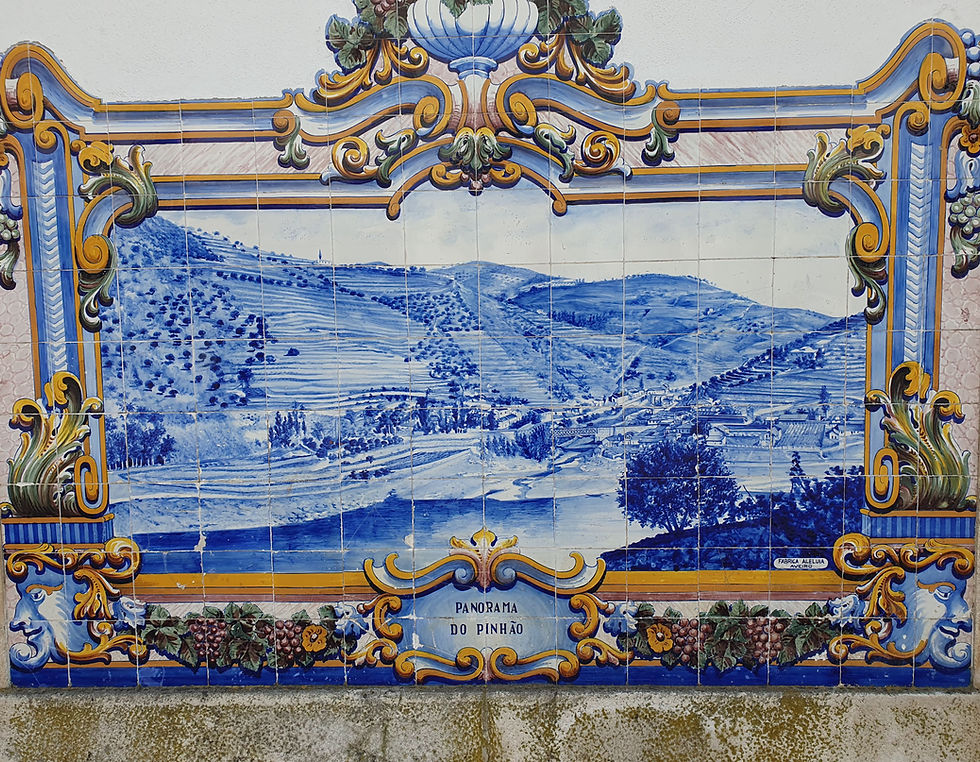Postcards from Portugal
- Bruce White
- Oct 24
- 3 min read
There are around 60 port wine cellars and tasting rooms in the Porto area, most of which are technically located just across the river in Vila Nova de Gaia. Of these, more than ten major port houses offer tours and tastings to visitors.


The Douro River region in northern Portugal is one of the world’s oldest and most celebrated wine regions, with a winemaking history dating back over 2,000 years.







The famous local ham in both Porto and Lisbon is called presunto. Presunto is Portuguese dry-cured ham, similar to Spanish jamón, and is a staple in traditional cuisine throughout Portugal.
While presunto is enjoyed across the country, some of the most renowned varieties come from the Alentejo region (Presunto de Porco Preto Alentejano, made from black Iberian pigs) and the Chaves region in northern Portugal. In Porto, you’ll often find presunto from Chaves or the Douro area, while in Lisbon, Alentejo presunto is especially popular.
Presunto is typically served thinly sliced as a petisco (snack), in sandwiches, or as part of cheese and charcuterie boards in both cities.

Porto is home to several vibrant local food markets where you can experience
authentic Portuguese flavors and culture. Here are some of the most notable:
Mercado do Bolhão: The city’s most iconic market, operating since 1837. It features fresh produce, seafood, meats, cheeses, flowers, and local specialties. The market also has cafes, bars, and artisan stalls.
Mercado Bom Sucesso: A modern food market with a variety of gourmet food stalls, regional products, and a lively atmosphere. It’s a great spot for tasting local dishes and wines.
Mercado Beira-Rio: Located across the river in Vila Nova de Gaia, this market offers food stalls, fresh produce, and a selection of local wines and snacks.
Mercado Porto Belo: Known for artisan and vintage goods, but also features some local food products.
O Berdinho: A small farmers’ market in the Cedofeita neighborhood, open on Saturday mornings, offering fruits, vegetables, organic honey, cakes, and olives.
These markets are excellent places to sample local cuisine, buy fresh ingredients, and soak up Porto’s unique atmosphere.


Ancient Beginnings: The Romans introduced viticulture to the Douro Valley, recognizing its steep, terraced slopes and schist soils as ideal for grape growing.
Port Wine Emergence: In the 17th century, British merchants began fortifying Douro wines with brandy to preserve them during transport, creating what we now know as Port wine. This style quickly gained popularity in England and beyond.


While Port remains the region’s most famous export, the Douro now also produces acclaimed dry red and white wines, using native grape varieties like Touriga Nacional, Tinta Roriz, and Rabigato.
The Douro’s dramatic landscape, unique microclimates, and centuries-old traditions make its wines distinctive and highly sought after by wine lovers worldwide.








Bacalhau (salted cod) is a staple in Portuguese cuisine and is often called the "faithful friend" of Portugal. It’s said there are over 365 ways to prepare bacalhau—one for each day of the year! Popular dishes include Bacalhau à Brás (shredded cod with potatoes, onions, and eggs), Bacalhau com Natas (cod with cream), and Bacalhau à Gomes de Sá (cod casserole with potatoes and onions). You’ll find bacalhau in markets, restaurants, and even home kitchens across Portugal, often served during holidays and special occasions.




Comments